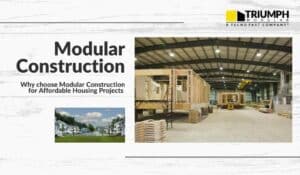In recent years, the construction industry has witnessed a significant shift towards modular construction methods. This innovative approach has gained traction due to its numerous benefits, including increased efficiency, reduced costs, and improved sustainability. At the heart of this revolution are modular architects, professionals who play a crucial role in bridging the gap between traditional construction practices and cutting-edge modular techniques.
The Rise of Modular Construction
Before delving into the specific role of modular architects, it’s essential to understand the growing importance of modular construction in today’s building industry. A report by Dodge Data & Analytics indicates that the use of prefabrication and modular construction is expected to grow by 5% between 2020 and 2023. This growth is supported by data from the Modular Building Institute, which reports that modular construction can reduce construction time by 30-50% compared to traditional methods. Furthermore, a study by McKinsey & Company found that modular construction has the potential to reduce costs by up to 20% while significantly improving quality and safety. These statistics highlight the increasing adoption and benefits of modular construction, underscoring the need for skilled modular architects to lead these projects.
Understanding Modular Construction
Modular construction involves two primary tracks. The first track focuses on building large elements of the structure in a manufacturing plant, away from the project site, to a wholly finished condition. The second track involves delivering these prefabricated modules to a prepared site, where typical construction activities such as clearing, site grading, utility preparations, and foundations have been completed. The success of modular projects hinges on the seamless integration of these two tracks, a process in which modular architects play a pivotal role.
The Unique Challenges of Modular Construction
Modular construction presents unique challenges that require specialized knowledge and expertise. One such challenge is the presence of “concealed elements” in buildings constructed in a manufacturing plant, which would not typically be inspected on-site by local building officials. Additionally, most states have design review and inspection programs to ensure that all systems built off-site meet code requirements. Perhaps the most significant challenge is the need to coordinate off-site manufacturing with on-site construction, which requires meticulous planning and execution.
The Role of Modular Architects
Modular architects are at the forefront of addressing these challenges. Their responsibilities extend beyond those of traditional architects, encompassing several key areas. Firstly, they must design buildings with manufacturing processes in mind, considering factors such as structural frame sizing, weights, suitability for over-the-road transport, and connection point detailing of all systems. Secondly, they need to be well-versed in state-specific regulations governing modular construction. For example, in Massachusetts, the Manufactured Buildings Program under the Board of Building Regulations and Standards (BBRS) oversees the design, manufacture, and installation of modular buildings.
Modular architects often work closely with modular manufacturers to ensure that designs are optimized for off-site construction while meeting all necessary codes and standards. They play a crucial role in ensuring seamless integration between prefabricated modules and site-built elements. Furthermore, they often oversee the quality control process, working with independent third-party inspection agencies to review plans and conduct inspections
The Triumph Modular Approach
At Triumph Modular, we’ve developed an approach that maximizes the benefits of having a dedicated modular architect. We advocate for having one overarching project architect who coordinates all aspects of the project, both on-site and off-site. Our favored approach involves having the modular factory contract separately with the project architect to review and stamp the modular plans for submission to the state program. This approach ensures that off-site and on-site elements are properly coordinated, with detailed plans and information modeling showing connection points between prefabricated units and on-site construction.
The Value of Modular Architects
Modular architects bring immense value to construction projects. Their specialized knowledge can lead to faster project completion times and reduced costs. Their oversight ensures that both off-site and on-site elements meet the highest standards of quality. Modular architects are at the forefront of implementing cutting-edge construction techniques and technologies. Moreover, their expertise can lead to more sustainable building practices, reducing waste and improving energy efficiency.
Summary
The role of modular architects in today’s construction industry cannot be overstated. As the demand for faster, more efficient, and sustainable building methods continues to grow, these professionals will play an increasingly vital role in shaping the future of construction.
In Part 2 of this series, we’ll delve deeper into the cost considerations associated with employing modular architects in volumetric modular construction projects.
Related content: Is Modular Construction Less Expensive than Conventional?
Disclaimer: The foregoing is not offered as or should be taken as code or legal advice. You should contact the regulatory authorities having jurisdiction over manufactured structures in your state or one of their licensed third-party inspection agencies for further guidance. Each state is different in how it deals with these issues.




